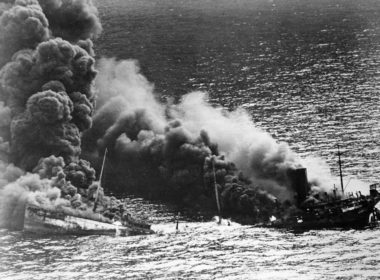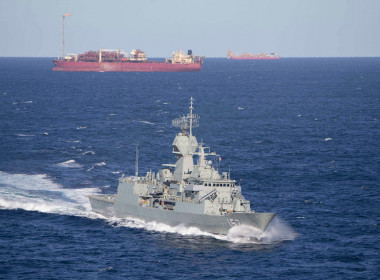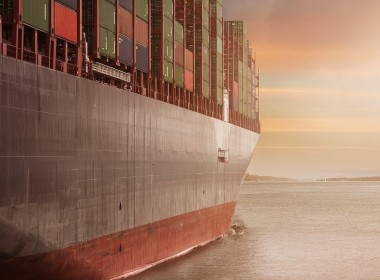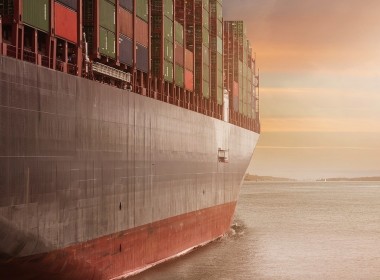OPINION | Wartime trade: it’s not just military supply

The vulnerability of Australia’s trade routes to military coercion was highlighted by both last year’s Defence Strategic Update and by government commentary on the rationale for AUKUS.
In his critique of ASPI’s new report, The trade routes vital to Australia’s economic security, Richard Dunley argues there are radical differences between trade in peace and in wartime, suggesting patterns of trade in the former have little bearing on those in the latter.
ASPI’s report is explicit about the limitations of its analysis:
“This report explores our trading routes in peacetime. Any conflict would bring sharper focus on what shipping and what trade is truly necessary and on what can be done to secure it. However, the strengths and vulnerabilities of our linkages to the world are evident now and are the focus of this report.”
The possible impact of future wars—ranging from isolated skirmishes to a nuclear holocaust—on Australia’s trade routes can only be a subject of speculation. However, a starting point must be an understanding of how Australia’s trade flows now.
ASPI’s report shows that 90 per cent of Australia’s maritime exports and 83 per cent of its maritime imports travel to the north, either through the Indonesian archipelago or to the east of Papua New Guinea and through the South Pacific.
Dunley says that in the event of conflict, Australia’s key trade routes will not be north-south but instead east-west, across the Pacific and Indian Oceans to connect the country with its strategic allies.
That would depend upon the intensity and location of hostilities. It is unlikely that Australia would find significant alternative markets for its major exports either to the east or the west.
“Australia’s defence planning must consider both the importance of the Indonesian archipelago, which carries an estimated 66 per cent of our exports and about 40 per cent of our imports.”
ASPI’s report notes that one could assume that any conflict between China and the United States would halt the 48 per cent of Australia’s maritime exports and 30 per cent of imports that are traded with China. But Australia’s bilateral trade with other key Asian partners is critical not only to us but also to them and would likely continue in some form.
One of the report’s recommendations is that Australia should understand better the strategic importance of its exports to key trading partners. This goes to Australia’s provision of critical seaborne supply in any conflict.
A key point in the ASPI report is the resilience of trade in the face of conflict. That resilience has several sources. The support and protection provided by naval forces, as Dunley points out, is the most fundamental of these. The availability of alternative shipping routes across the vast oceans is another.
Australia’s defence planning must consider both the importance of the Indonesian archipelago, which carries an estimated 66 per cent of our exports and about 40 per cent of our imports, and the alternative route to North Asia around the south of Australia and up the eastern side of Papua New Guinea.
If conflict closed the Malacca Strait and the South China Sea, that eastern route would be taken not only by West Australian iron ore and gas exports but also by a large percentage of the entire world’s shipping fleet as it travelled between Asia in the east and Europe, the Middle East and Africa to the west.
Other sources of resilience highlighted in the report are the availability of war-risk insurance and the competitiveness of the shipping industry itself.
The ASPI report included, as an appendix, an analysis of historic trade figures from World War II, compiled by the Department of Foreign Affairs and Trade, showing that even in 1942–43, when both the Pacific and European wars were still raging, Australia’s export revenue was only seven percent below pre-war levels, while imports were more than double. This appendix is highly relevant to Dunley’s critique, as well as to the report.
Dunley argues that the resilience of trade during the war was the product of strenuous government effort, rather than any structural strength of trade itself. Both Australia and Britain operated war economies, with strict licencing of imports, control over exports, and great constraints on the availability of shipping. He argues that international transactions in wartime should properly be considered as supply rather than trade, saying Australia was importing to supply its war needs and exporting to supply the needs of its allies.
However, the Second World War Official History says two central themes in wartime trade planning were the political importance of primary industry and “acceptance of the idea of the vital importance of maintaining exports as such, almost regardless of their place in a war economy”.
The latter point reflected the need for foreign exchange. This was trade, not just supply. Even when dealing with the British government, the prices written into our export contracts were the subject of fierce bargaining.
“In any conflict scenario, Australia will still depend on international shipping to carry its trade.”
The department’s trade figures highlight the radical diversification of this trade. Exports to Britain did not recover pre-war levels until 1947–48, while trade with the European continent and East Asia halted as they came under enemy control. However, even in 1942–43, exports to each of the United States, New Zealand, Canada, India, Sri Lanka, South Africa, Egypt, Papua New Guinea, and Fiji were far above pre-war levels.
The war history highlights the success of the government in chartering shipping, noting that in 1942, chartered ships carried two million tonnes of coastal cargo and 1.8 million tonnes of international freight: “The cargo from Australia to overseas ports was varied: cereals, sugar, copra; and from overseas ports phosphates, sulphur, chrome ore, salt, bitumen, newsprint, as well as general cargo in both directions.” It notes that 40 per cent of imports were “general cargo.”
Australia insisted on its right to ship wine and feed-barley to Britain on ships it controlled, to avoid problems with its domestic wine grape and barley growers.
Dunley is correct to highlight the importance of naval control of the sea in making this trade possible. The use of convoys through the early years of the war was an expensive, cumbersome but necessary measure. The underwriting of war-risk insurance by the British government and, later in the war, by Australia’s Treasury, was an important structural buttress to trade.
Trade and shipping has increased vastly over the past seven decades. In 2020–21, 6,219 cargo ships made a total of 17,303 voyages to Australian ports, and imports supplied almost a quarter of all Australian domestic demand.
In any conflict scenario, Australia will still depend on international shipping to carry its trade. ASPI’s report aims to assist an understanding of how that shipping is structured and its role in Australia’s economic security.








